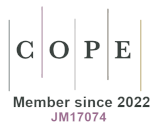Problematyka demograficzna we współczesnych koncepcjach miasta
DOI:
https://doi.org/10.18778/2543-9421.07.01Słowa kluczowe:
koncepcja miasta, demografia, miasto kurczące się, miasto inteligentne, miasto odporne, ekomiasto, miasto postcovidoweAbstrakt
W ostatnich kilkunastu latach pojawiło się wiele nowych (lub reaktywowanych) koncepcji miasta o różnym stopniu kodyfikacji i systematyzacji wiedzy. Na podstawie przeglądu literatury naukowej autor podejmuje próbę odpowiedzi na pytania: czy i w jakim stopniu czynnik demograficzny jest brany pod uwagę w tworzeniu koncepcji miasta. W konkluzji stwierdza, że podobnie jak w procesach urbanizacji trendy demograficzne przeplatają się z gospodarczymi, społecznymi, ekologicznymi i politycznymi, tak też kwestie demograficzne stają się coraz ważniejszym elementem najpopularniejszych obecnie koncepcji miast.
Bibliografia
Chojnicki, Z. (1999). Podstawy metodologiczne i teoretyczne geografii. Poznań: Bogucki Wydawnictwo Naukowe.
Google Scholar
Clark, G. (2021). Cities after the pandemic: The blended city and distributed urbanization. Pobrane z: https://www.msci.com/documents (16.06.2022).
Google Scholar
Davis, W.K.D. (2015). Theme cities: Solutions for urban problems. London: Springer.
Google Scholar
DOI: https://doi.org/10.1007/978-94-017-9655-2
De Jong, M., Joss, S., Schraven, D., Zhan, C., Weijnen, M. (2015). Sustainable–smart–resilient–low carbon–eco–knowledge cities; making sense of a multitude of concepts promoting sustainable urbanization. Journal of Cleaner Production, 109, 25–38. https://doi.org/10.1016/j.jclepro.2015.02.004
Google Scholar
DOI: https://doi.org/10.1016/j.jclepro.2015.02.004
Dempsey, N. (2010). Revisiting the compact city? Built Environment, 36 (1), 5–8. https://doi.org/10.2148/benv.36.1.5
Google Scholar
DOI: https://doi.org/10.2148/benv.36.1.5
Fainstein, S.S. (2010). The just city. Ithaca: Cornell University Press.
Google Scholar
Figueiredo, L., Honiden, T., Schumann, A. (2018). Indicators for resilient cities. OECD Regional Development Working Papers, 2. Paris: OECD Publishing. https://doi.org/10.1787/6f1f6065-en
Google Scholar
DOI: https://doi.org/10.1787/6f1f6065-en
Florida, R., Rodríguez-Pose, A., Storper, M. (2021). Cities in a post-COVID world. Geography, Urban Studies, 0 (0). https://doi.org/10.1177/00420980211018072
Google Scholar
DOI: https://doi.org/10.1177/00420980211018072
Gehl, J. (2014). Miasta dla ludzi. Tłum. M.A. Urbańska. Kraków: Wydawnictwo RAM.
Google Scholar
Glaeser, E. (2011). Triumph of the city. London: Macmillan.
Google Scholar
Gusic, I. (2020). Contesting peace in the postwar city: Belfast, Mitrovica and Mostar. Cham: Palgrave Macmillan.
Google Scholar
DOI: https://doi.org/10.1007/978-3-030-28091-8
Haaland, C., Konijnendijk van den Bosch, C. (2015). Challenges and strategies for urban green-space planning in cities undergoing densification: A review. Urban Forestry & Urban Greening, 14 (4), 760–771. https://doi.org/10.1016/j.ufug.2015.07.009
Google Scholar
DOI: https://doi.org/10.1016/j.ufug.2015.07.009
Haase, A., Nelle, A., Mallach, A. (2017). Representing urban shrinkage – the importance of discourse as a frame for understanding conditions and policy. Cities, 69, 95–101. https://doi.org/10.1016/j.cities.2016.09.007
Google Scholar
DOI: https://doi.org/10.1016/j.cities.2016.09.007
Kaczmarek, T. (2021). Miasta w czasie pandemii COVID-19. Stan i wyzwania. W: L. Mierzejewska, M. Wdowicka (red.), Miasta i regiony w obliczu pandemii COVID-19 i innych wyzwań współczesnego świata (s. 31–42). Poznań: Bogucki Wydawnictwo Naukowe.
Google Scholar
Kaczmarek, U. (2019). Koncepcja slow city i jej wdrażanie w małych miastach obszaru metropolitalnego. Przykład Murowanej Gośliny i Schneverdingen. Rozwój Regionalny i Polityka Regionalna, 48, 119–145. https://doi.org/10.14746/rrpr.2019.48.08
Google Scholar
DOI: https://doi.org/10.14746/rrpr.2019.48.08
Kirbyshire, A., Wilkinson, E., Le Masson, V., Batra, P. (2017). Mass displacement and the challenge for urban resilience Working paper]. Pobrane z: https://cdn.odi.org/media/documents/11202.pdf (20.06.2022).
Google Scholar
Knox, P. (red.) (2014). Atlas of cities. Princeton: Princeton University Press.
Google Scholar
DOI: https://doi.org/10.1515/9781400851942
McCann, E. (2011). Urban policy mobilities and global circuits of knowledge: Toward a research agenda. Annals of the Association of American Geographers, 101, 107–130. https://doi.org/10.1080/00045608.2010.520219
Google Scholar
DOI: https://doi.org/10.1080/00045608.2010.520219
Moreno, C., Allam, Z., Chabaud, D., Gall, C., Pratlong, F. (2021). Introducing the “15-minute city”: Sustainability, resilience and place identity in future post-pandemic cities. Smart Cities, 4 (1), 93–111. https://doi.org/10.3390/smartcities4010006
Google Scholar
DOI: https://doi.org/10.3390/smartcities4010006
O’Sullivan, A. (2011). Urban economics. Irwin, Boston: McGraw- Hill Higher Education.
Google Scholar
Pielesiak, I., Ogrodowczyk, A., Marcińczak, S. (2021). Budowanie prężności w kontekście kurczenia się miast europejskich. Łódź: Wydawnictwo Uniwersytetu Łódzkiego.
Google Scholar
DOI: https://doi.org/10.18778/8220-411-7
Rink, D., Haase, A. (red.) (2018). Handbuch Stadtkonzepte: Analysen, Diagnosen, Kritiken und Visionen. Opladen, Toronto: Verlag Barbara Budrich.
Google Scholar
DOI: https://doi.org/10.36198/9783838549552
Solarek, K. (2011). Współczesne koncepcje rozwoju. Kwartalnik Architektury i Urbanistyki, 56 (4), 51–71.
Google Scholar
Stryjakiewicz, T., Jaroszewska, E. (2022). Shrinking cities in Poland – recent trends of change and emerging policy responses. W: C.-T. Wu, M. Gunko, T. Stryjakiewicz, K. Zhou (red.), Postsocialist shrinking cities (s. 256–275). London: Routledge. https://doi.org/10.4324/9780367815011-21
Google Scholar
DOI: https://doi.org/10.4324/9780367815011-21
Suzuki, H., Dastur, A., Moffatt, S., Yabuki, N., Maruyama, H. (2010). Eco2 cities: Ecological cities as economic cities. Pobrane z: https://openknowledge.worldbank.org/entities/publication/b3d94d3a-5ebf-57ff-9588-37ff9d581a8b (20.06.2022).
Google Scholar
DOI: https://doi.org/10.1596/978-0-8213-8046-8
Vasconcelos, P. de A. (2015). The metamorphoses in the concept of the city. Mercator, 14 (4), 17–23. https://doi.org/10.4215/RM2015.1404.0002
Google Scholar
DOI: https://doi.org/10.4215/RM2015.1404.0002
Wade, L. (2020). An unequal blow. Science, 368 (6492), 700–703. https://doi.org/10.1126/science.368.6492.700
Google Scholar
DOI: https://doi.org/10.1126/science.368.6492.700
Wasdani, K.P., Prasad, A. (2020). The impossibility of social distancing among the urban poor: The case of an Indian slum in the times of COVID-19. Local Environment. The International Journal of Justice and Sustainability, 25 (5), 414–418. https://doi.org/10.1080/13549839.2020.1754375
Google Scholar
DOI: https://doi.org/10.1080/13549839.2020.1754375
Pobrania
Opublikowane
Jak cytować
Numer
Dział
Licencja

Utwór dostępny jest na licencji Creative Commons Uznanie autorstwa – Użycie niekomercyjne – Bez utworów zależnych 4.0 Międzynarodowe.









